9 Must See Temples In Kyoto Japan
After a bunch of visits to Japan over the years, I’ve put together this Kyoto temple & shrine guide to help you find the best ones! Kyoto is Japan’s ancient capital and cultural center, so it has a lot of the most famous shrines in Japan, and there are a bunch of must-see temples in Kyoto

After a bunch of visits to Japan over the years, I’ve put together this Kyoto temple & shrine guide to help you find the best ones!
Kyoto is Japan’s ancient capital and cultural center, so it has a lot of the most famous shrines in Japan, and there are a bunch of must-see temples in Kyoto too.
There are actually more than 2,000 temples and shrines in Kyoto, so it can be tough to decide which ones to visit. Read on for my complete Kyoto temple guide!
1. Kinkaku-ji Temple
The Kinkaku-ji Temple (also known as the Golden Pavilion) is one of the most iconic and famous places in Japan.
It’s the #1 most visited Kyoto temple, and for pretty good reason! It’s almost impossible to take a bad photo here! This is definitely one of the best temples in Kyoto.
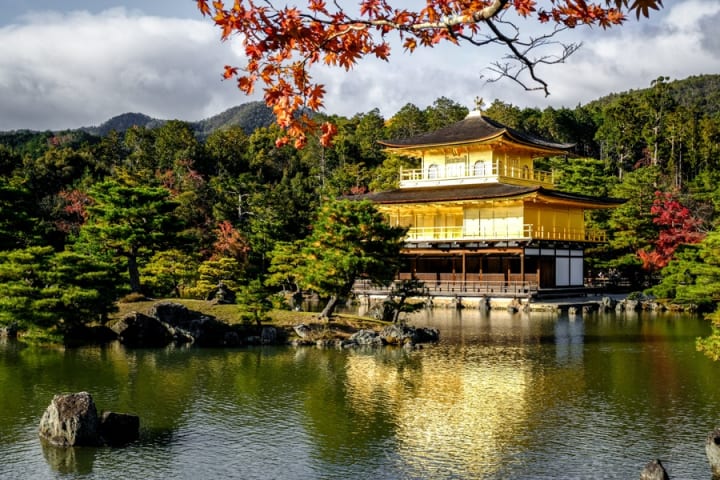
A good time to visit is in the morning before the wind picks up, then you can see reflections on the pond.
2. Ginkaku-ji Temple
After you visit the Golden Pavilion, you might like to know that it also has a less famous twin called Ginkaku-ji, the Silver Pavilion! This one is located in eastern Kyoto (Higashiyama), but it’s not too hard to reach.
Also known as the Higashiyama Jisho-ji, this temple dates back to the 15th century, when it was originally built as a mountain villa for the shoguns.

It’s a beautiful building in its own way, and very photogenic, with a dry sand garden and raised cone that looks like Mount Fuji.

3. Tenryu-ji Temple
This temple was built in the 14th century and it’s located in Kyoto’s Arashiyama district.

It has a nice landscape garden and incredible fall colors if you come near the middle of November. The garden is the main reason this one made my list of the best temples in Kyoto.
Tenryu-ji also borders the famous Arashiyama Bamboo Grove, so chances are you’ll be near it anyway if you’re visiting the top tourist sites of west Kyoto.
4. Fushimi Inari Shrine

This is an 8th-century Kyoto shrine with more than 1,000 orange torii gates surrounded by forest.

It’s fun to wander around the maze of gates and there are some nice mountain trails too.
This place can get very crowded with tourists though, so it’s best to come in the early morning or late afternoon.
5. Kiyomizu-dera Temple

Kiyomizudera (清水寺, literally "Pure Water Temple") is one of the most celebrated temples of Japan. It was founded in 780 on the site of the Otowa Waterfall in the wooded hills east of Kyoto, and derives its name from the fall's pure waters.

Kiyomizu-dera is a Buddhist temple that was built in eastern Kyoto in the 8th century.
6. Yasaka Pagoda

It’s impossible to visit the Higashiyama district in Kyoto without seeing this iconic pagoda sticking out above the rest of the buildings.
The Yasaka Pagoda has 5 stories and even though it was built in the 15th century, it’s part of a temple that dates back to the 6th century.

The best photos are on the outside, of course, but you can also go inside (up to the 2nd floor of the pagoda) for a fee.
7. Kennin-ji Temple
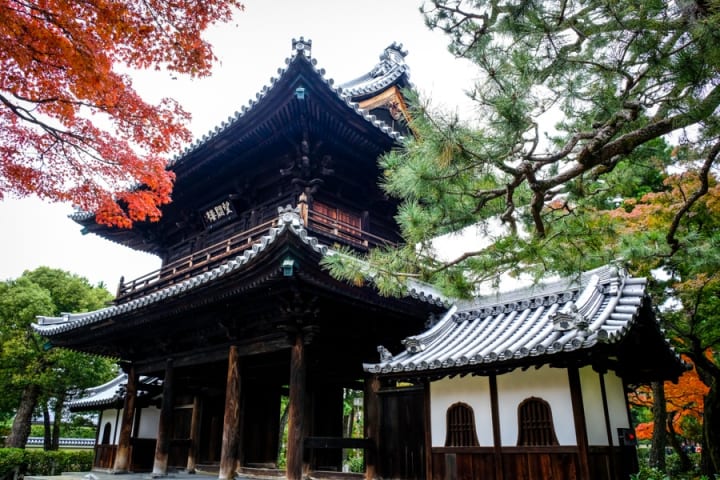
Kenninji (建仁寺) is a Zen temple located just south of Kyoto's famous Gion entertainment district. The temple serves as one of the head temples of the Rinzai Sect of Japanese Buddhism and is ranked third among the five great Zen temples of Kyoto.
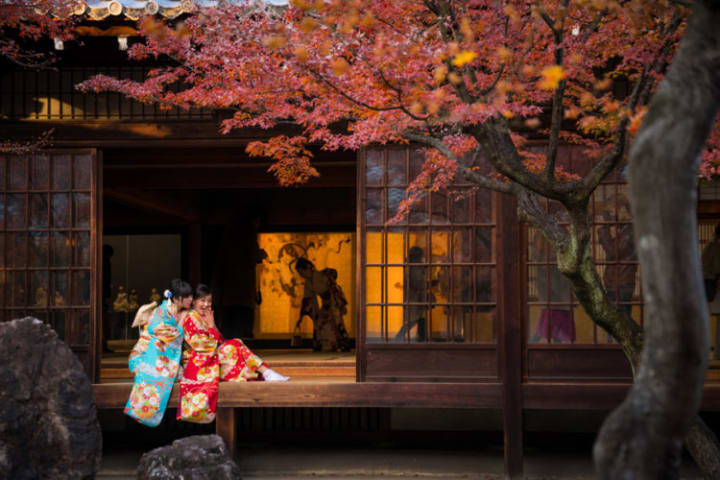
Kenninji was founded by Eisai (also known as Yosai), the Buddhist monk who introduced both Zen Buddhism and tea cultivation to Japan upon returning from study trips to China. The temple was constructed in 1202 and is considered to be the oldest Zen temple in Kyoto.
8. Byodo-in Temple (Uji)
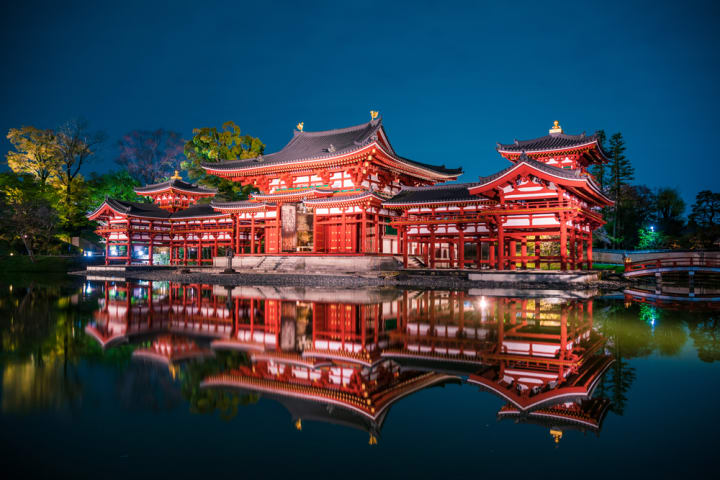
Byodoin Temple (平等院, Byōdōin) is a striking example of Buddhist Pure Land (Jodo) architecture. Together with its garden, the temple represents the Pure Land Paradise and was influential on later temple construction. Byodoin was initially built in 998 as a countryside retreat villa for the powerful politician Fujiwara no Michinaga, not as a temple.
Michinaga's son turned Byodoin into a temple and ordered the construction of its most spectacular feature, the Phoenix Hall. Although the building was given another official name, almost immediately after its construction in 1053, it was nicknamed Hoodo ("Phoenix Hall") because of its shape and the two phoenix statues on its roof. The hall is now featured on the back of the Japanese ten yen coin.
9. Todai-ji Temple (Nara)
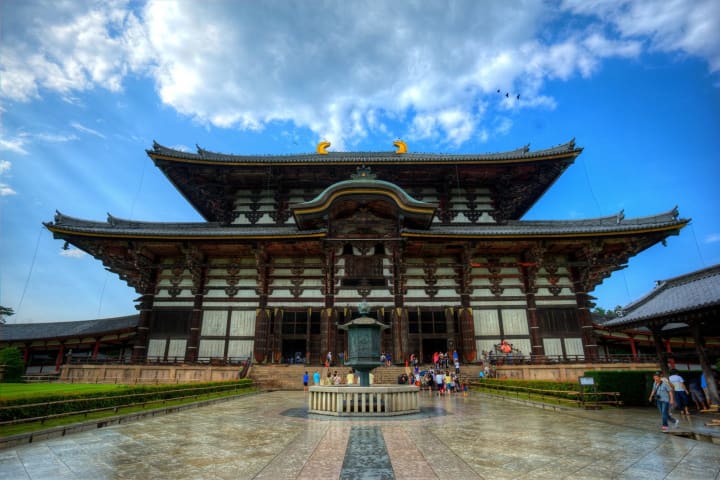
Todai-ji Temple is one of Japan’s biggest and most spectacular landmarks. Even though it’s outside of Kyoto, you can still visit it easily from there.
This massive ancient monument has a lot of cool history behind it. It was the world’s biggest wooden building for a millennium, and it houses the biggest bronze Buddha statue in the world.
I’ve visited Todai-ji a couple of times and it’s a must-see. If you look around the Nara Park, it also has a bunch of other traditional Japanese temples and shrines.
Nara is super easy to visit on a day trip from Kyoto or Osaka, so you should definitely add it to your Japan bucket list!
Japanese Temple Etiquette
Most traditional shrines and temples in Kyoto Japan are open to tourists, but there are a few basic rules and things to know:
- Always be calm and respectful, not noisy — especially when you’re indoors.
- To go inside of temple buildings, you may have to take off your shoes. This means leaving them at the entrance, or sometimes they’ll provide plastic bags for carrying them with you.
- You can take photos on the temple grounds, but usually not inside of the buildings. If pictures aren’t allowed, it’ll be sign posted.
- Some Kyoto temples and shrines are free, but many are not. If there’s an entrance fee, it’s normally less than 500 Yen ($5 USD) per person and tickets are good for the whole day.
- There are lots of kimono rental shops in Kyoto, and you can wear these to a Japanese temple. If you ask the locals, they aren’t offended by foreigners wearing their traditional dress for pictures, and you’ll see lots of them doing the same.
If you like this post please share your love so more people can see it too
About the Creator
Reader insights
Outstanding
Excellent work. Looking forward to reading more!
Top insights
Easy to read and follow
Well-structured & engaging content
On-point and relevant
Writing reflected the title & theme
Compelling and original writing
Creative use of language & vocab
Heartfelt and relatable
The story invoked strong personal emotions





Comments (1)
I always wanted to go to Japan because of anime and now i want to go to Kyoto because of your article